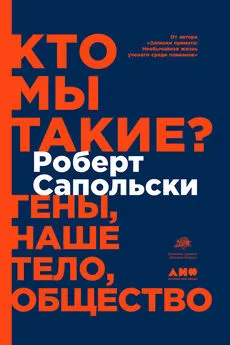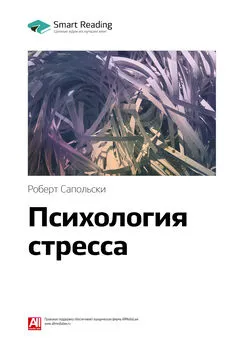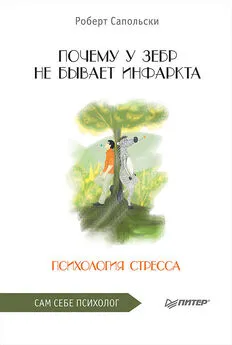Роберт Сапольски - Биология добра и зла. Как наука объясняет наши поступки
- Название:Биология добра и зла. Как наука объясняет наши поступки
- Автор:
- Жанр:
- Издательство:Альпина нон-фикшн
- Год:2019
- Город:Москва
- ISBN:978-5-0013-9051-0
- Рейтинг:
- Избранное:Добавить в избранное
-
Отзывы:
-
Ваша оценка:
Роберт Сапольски - Биология добра и зла. Как наука объясняет наши поступки краткое содержание
Биология добра и зла. Как наука объясняет наши поступки - читать онлайн бесплатно ознакомительный отрывок
Интервал:
Закладка:
496
F. Durante et al., “Nations’ Income Inequality Predicts Ambivalence in Stereotype Content: How Societies Mind the Gap,” Brit J Soc Psych 52 (2012): 726.
497
N. Adler et al., “Relationship of Subjective and Objective Social Status with Psychological and Physiological Functioning: Preliminary Data in Healthy White Women,” Health Psych 19 (2000): 586; N. Adler and J. Ostrove, “SES and Health: What We Know and What We Don’t,” ANYAS 896 (1999): 3; I. Kawachi et al., “Crime: Social Disorganization and Relative Deprivation,” Soc Sci and Med 48 (1999): 719; I. Kawachi and B. Kennedy, The Health of Nations: Why Inequality Is Harmful to Your Health (New York: New Press, 2002); J. Lynch et al., “Income Inequality, the Psychosocial Environment, and Health: Comparisons of Wealthy Nations,” Lancet 358 (2001): 194; G. A. Kaplan et al., “Inequality in Income and Mortality in the United States: Analysis of Mortality and Potential Pathways,” Brit Med J 312 (1996): 999; J. R. Dunn et al., “Income Distribution, Public Services Expenditures, and All Cause Mortality in US States,” J Epidemiology and Community Health 59 (2005): 768; C. R. Ronzio et al., “The Politics of Preventable Deaths: Local Spending, Income Inequality, and Premature Mortality in US Cities,” J Epidemiology and Community Health 58 (2004): 175.
498
R. Evans et al., Why Are Some People Healthy and Others Not? The Determinants of Health of Populations (New York: Aldine de Gruyter, 1994).
499
D. Chon, “The Impact of Population Heterogeneity and Income Inequality on Homicide Rates: A Cross-National Assessment,” Int J Offender Therapy and Comp Criminology 56 (2012): 730; F. J. Elgar and N. Aitken, “Income Inequality, Trust and Homicide in 33 Countries,” Eur J Public Health 21 (2010): 241; C. Hsieh and M. Pugh, “Poverty, Income Inequality, and Violent Crime: A Meta-analysis of Recent Aggregate Data Studies,” Criminal Justice Rev 18 (1993): 182; M. Daly et al., “Income Inequality and Homicide Rates in Canada and the United States,” Canadian J Criminology 32 (2001): 219.
500
K. A. DeCellesa and M. I. Norton, “Physical and Situational Inequality on Airplanes Predicts Air Rage,” PNAS 113 (2016): 5588.
501
M. Balter, “Why Settle Down? The Mystery of Communities,” Sci 282 (1998): 1442; P. Richerson, “Group Size Determines Cultural Complexity,” Nat 503 (2013): 351; M. Derex et al., “Experimental Evidence for the Influence of Group Size on Cultural Complexity,” Nat 503 (2013): 389; A. Gibbons, “How We Tamed Ourselves – and Became Modern,” Sci 346 (2014): 405.
502
F. Lederbogen et al., “City Living and Urban Upbringing Affect Neural Social Stress Processing in Humans,” Nat 474 (2011): 498; D. P. Kennedy and R. Adolphs, “Stress and the City,” Nat 474 (2011): 452; A. Abbott, “City Living Marks the Brain,” Nat 474 (2011): 429.
503
J. Henrich et al., “Markets, Religion, Community Size, and the Evolution of Fairness and Punishment,” Sci 327 (2010): 1480; к сноске: B. Maheer, “Good Gaming,” Nat 531 (2016): 568.
504
A. Norenzayan, Big Gods: How Religions Transformed Cooperation and Conflict (Princeton, NJ: Princeton University Press, 2015).
505
L. R. Florizno et al., “Differences Between Tight and Loose Cultures: A 33-Nation Study,” Sci 332 (2011): 1100.
506
J. B. Calhoun, “Population Density and Social Pathology,” Sci Am 306 (1962): 139; E. Ramsden, “From Rodent Utopia to Urban Hell: Population, Pathology, and the Crowded Rats of NIMH,” Isis 102 (2011): 659; J. L. Freedman et al., “Environmental Determinants of Behavioral Contagion,” Basic and Applied Soc Psych 1 (1980): 155; O. Galle et al., “Population Density and Pathology: What Are the Relations for Man?” Sci 176 (1972): 23.
507
A. Parkes, “The Future of Fertility Control,” in J. Meade, ed., Biological Aspects of Social Problems (NY: Springer, 1965).
508
M. Lim et al., “Global Pattern Formation and Ethnic/Cultural Violence,” Sci 317 (2007): 1540; A. Rutherford et al., “Good Fences: The Importance of Setting Boundaries for Peaceful Coexistence,” PLoS ONE 9 (2014): e95660.
509
Florizno et al., “Differences Between Tight and Loose.”
510
В следующих работах рассматривается влияние нормальных погодных колебаний, экстремальных погодных условий и глобального потепления на различные социальные конечные точки: J. Brashares et al., “Wildlife Decline and Social Conflict,” Sci 345 (2014): 376; S. M. Hsiang et al., “Civil Conflicts Are Associated with the Global Climate,” Nat 476 (2011): 438; A. Solow, “Climate for Conflict,” Nat 476 (2011): 406; S. Schiermeier, “Climate Cycles Drive Civil War,” Nat 476 (2011): 406; E. Miguel et al., “Economic Shocks and Civil Conflict: An Instrumental Variables Approach,” J Political Economy 112 (2004): 725; M. Burke et al., “Warming Increases Risk of Civil War in Africa,” PNAS 106 (2009): 20670; J. P. Sandholt and K. S. Gleditsch, “Rain, Growth, and Civil War: The Importance of Location,” Defence and Peace Economics 20 (2009): 359; H. Buhaug, “Climate Not to Blame for African Civil Wars,” PNAS 107 (2010): 16477; D. D. Zhang et al., “Global Climate Change, War and Population Decline in Recent Human History,” PNAS 104 (2007): 19214; R. S. J. Tol and S. Wagner, “Climate Change and Violent Conflict in®Europe over the Last Millennium,” Climatic Change 99 (2009): 65; A. Solow, “A Call for Peace on Climate and Conflict,” Nat 497 (2013): 179; J. Bohannon, “Study linkhs Climate Change and Violence, Battle Ensues,” Sci 341 (2013): 444; S. M. Hsiang et al., “Quantifying the Influence of Climate on Human Conflict,” Sci 341 (2013): 1212.
511
R. Sapolsky, “Endocrine and Behavioral Correlates of Drought in the Wild Baboon,” Am J Primat 11 (1986): 217.
512
J. Bohannon, “Study linkhs Climate Change and Violence, Battle Ensues,” Sci 341 (2013): 444.
513
E. Culotta, “On the Origins of Religion,” Sci 326 (2009): 784 (это источник цитирования); C. A. Botero et al., “The Ecology of Religious Beliefs,” PNAS 111 (2014): 16784; A. Shariff and A. Norenzayan, “God Is Watching You: Priming God Concepts Increases Prosocial Behavior in an Anonymous Economic Game,” Psych Science 18 (2007): 803; R. Wright, The Evolution of God (Boston, MA: Little, Brown, 2009).
514
L. Keeley, War Before Civilization: The Myth of the Peaceful Savage (Oxford: Oxford University Press, 1996).
515
S. Pinker, The Better Angels of Our Nature: Why Violence Has Declined (New York: Penguin, 2011).
516
G. Milner, “Nineteenth-Century Arrow Wounds and Perceptions of Prehistoric Warfare,” Am Antiquity 70 (2005): 144.
517
См. весь выпуск: D. Fry, War, Peace, and Human Nature: The Convergence of Evolutionary and Cultural Views (Oxford: Oxford University Press, 2015). В частности, см. эти главы в нем: R. Ferguson, “Pinker’s List: Exaggerating Prehistoric War Mortality,” p. 112; R. Sussman “Why the Legend of the Killer Ape Never Dies: The Enduring Power of Cultural Beliefs to Distort Our View of Human Nature,” p. 92; и R. Kelly, “From the Peaceful to the Warlike: Ethnographic and Archeological Insights into Hunter-Gatherer Warfare and Homicide,” p. 151.
518
F. Wendorf, The Prehistory of Nubia (Dallas: Southern Methodist University Press, 1968).
519
R. A. Marlar et al., “Biochemical Evidence of Cannibalism at a Prehistoric Puebloan Site in Southwestern Colorado,” Nat 407 (2000): 74; M. Balter, “Did Neandertals Dine In?” Sci 326 (2009): 1057.
520
N. Chagnon, Yanomamo: The Fierce People (NY: Holt McDougal, 1984); N. A. Chagnon, “Life Histories, Blood Revenge, and Warfare in a Tribal Population,” Sci 239 (1988): 985.
521
A. Lawler, “The Battle over Violence,” Sci 336 (2012): 829.
522
G. Benjamin et al., “Violence: Finding Peace,” Sci 338 (2012): 327; S. Pinker, “Violence: Clarified,” Sci 338 (2012): 327.
523
A. R. Ramos, “Reflecting on the Yanomami: Ethnographic Images and the Pursuit of the Exotic,” Cultural Anthropology 2 (1987): 284; R. Ferguson, Yanomami Warfare: A Political History , a School for Advanced Research Resident Scholar Book (1995); E. Eakin, “How Napoleon Chagnon Became Our Most Controversial Anthropologist,” New York Times Magazine , 2013, p. 13; D. Fry, Beyond War: The Human Potential for Peace (Oxford: Oxford University Press, 2009).
524
L. Glowacki and R. Wrangham, “Warfare and Reproductive Success in a Tribal Population,” PNAS 112 (2015): 348. Для соответствующих выводов см.: J. Moore, “The Reproductive Success of Cheyenne War Chiefs: A Contrary Case to Chagnon’s Yanomamo,” Curr Anthropology 31 (1990): 322; S. Beckerman et al., “Life Histories, Blood Revenge and Reproductive Success Among the Waorani of Ecuador,” PNAS 106 (2009): 8134.
525
Оригинальные исследования, цитируемые Пинкером и Фраем: K. Hill and A. Hurtado, Ache Life History: The Ecology and Demography of a Foraging People (New York: Aldine de Gruyter, 1996).
526
S. Corry, “The Case of the ‘Brutal Savage’: Poirot or Clouseau? Why Steven Pinker, Like Jared Diamond, Is Wrong,” London: Survival International website, 2013.
527
K. Lorenz, On Aggression (MFJ Books, 1997); R. Ardrey, The Territorial Imperative: A Personal Inquiry into the Animal Origins of Property and Nations (Delta Books, 1966); R. Wrangham and D. Peterson, Demonic Males: Apes and the Origin of Human Violence (Boston: Houghton Mifflin, 1996).
528
C. H. Boehm, Hierarchy in the Forest: The Evolution of Egalitarian Behavior (Cambridge, MA: Harvard University Press, 1999); K. Hawkes et al., “Hunting Income Patterns Among the Hadza: Big Game, Common Goods, Foraging Goals, and the Evolution of the Human Diet,” Philosophical Transactions of the Royal Soc of London B 334 (1991): 243; B. Chapais, “The Deep Social Structure of Humankind,” Sci 331 (2011): 1276; K. Hill et al., “Co-residence Patterns in Hunter-Gatherer Societies Show Unique Human Social Structure,” Sci 331 (2011): 1286; K. Endicott, “Peace Foragers: The Significance of the Batek and Moriori for the Question of Innate Human Violence,” in Fry, War, Peace, and Human Nature , p. 243; M. Butovskaya, “Aggression and Conflict Resolution Among the Nomadic Hadza of Tanzania as Compared with Their Pastoralist Neighbors,” in Fry, War, Peace, and Human Nature , p. 278.
Читать дальшеИнтервал:
Закладка:
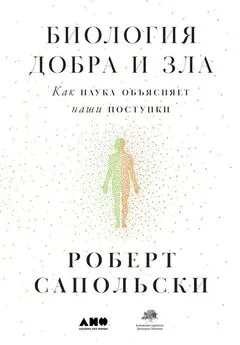
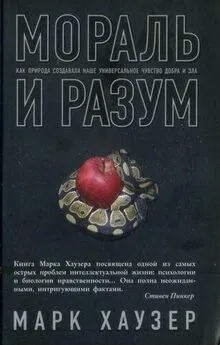
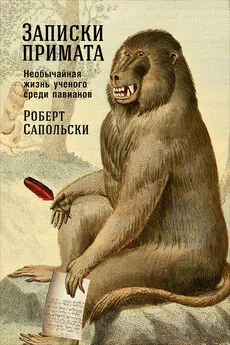
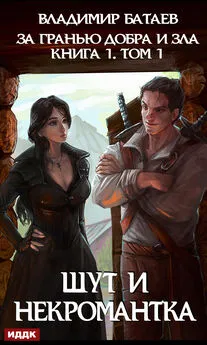

![Роберт Сапольски - Игры тестостерона и другие вопросы биологии поведения [litres]](/books/1074102/robert-sapolski-igry-testosterona-i-drugie-vopros.webp)
